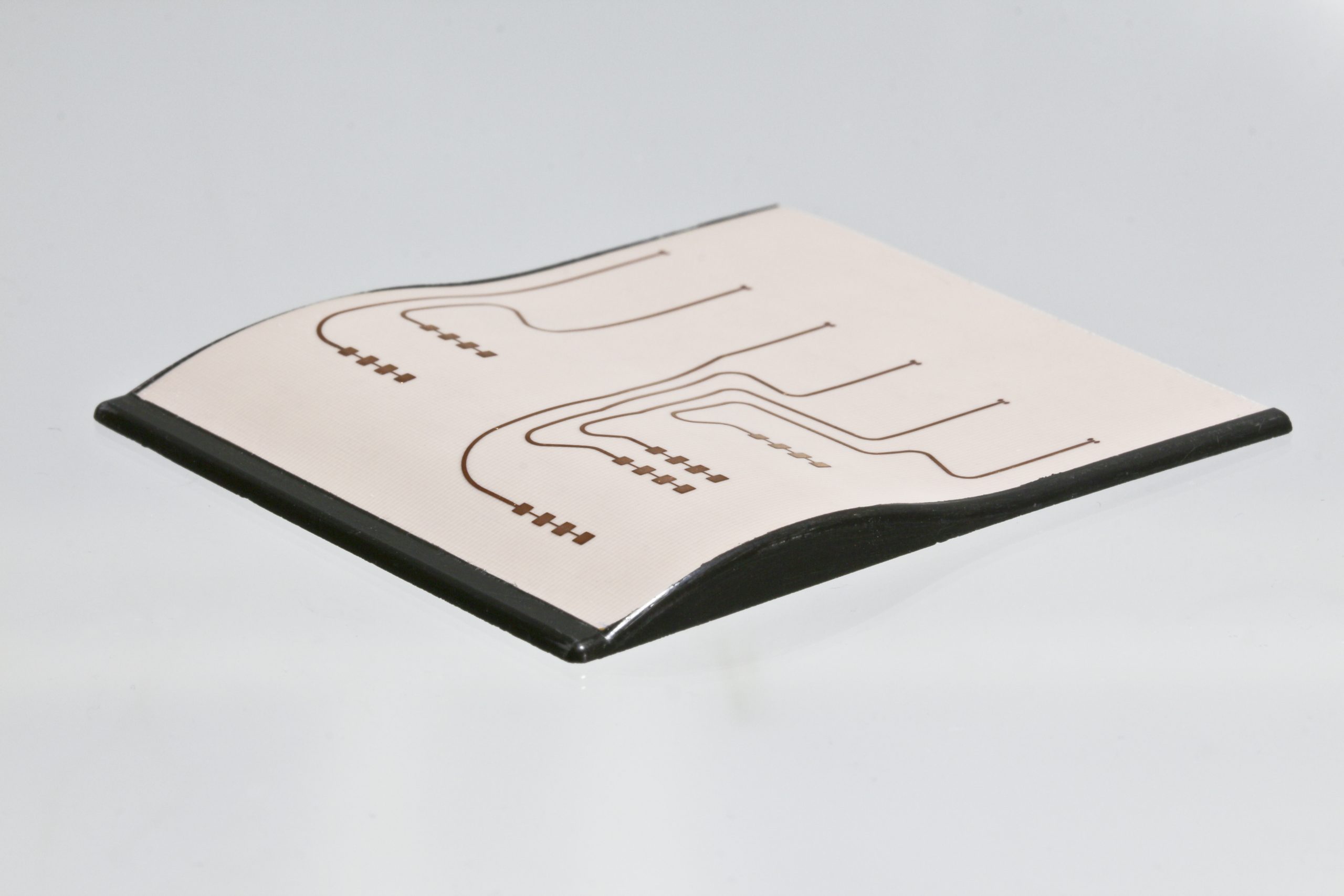
Ten million self-driving cars are expected to be on the road by 2030 in Europe alone. The benefits are obvious. By networking all vehicles, road traffic flows more efficiently. Drivers and passengers will be able to travel more comfortably and save time. Last but not least, driving will become a lot safer because up to now, most traffic accidents are caused by human error. But the sensors that scan and process their surroundings are still a major shortcoming. They are primarily mounted on the front and rear of the vehicle. As a result, they usually monitor an area of “only” 180°.
Researchers at the Fraunhofer IZM, together with partners in the “KoRRund” project (Conformal and Multistatic MIMO Radar Configurations for Radar Surveillance for Automated Driving), have now developed 3D radar modules that can be positioned more freely on the vehicle and thus – integrated into a sensor network – provide a 360° all-round view. They can analyze their surroundings in real time and from all perspectives simultaneously.
These “packaging processes for reliable radar sensors with revolutionary free-form surfaces” would allow for any antenna shape and attachment to the vehicle in the future, the scientists explain. To achieve this 360° real-time detection and include even the smallest objects and living beings from different perspectives, they are researching “new approaches to spatial resolution as well as target classification.”
From the second to the third dimension
Fraunhofer IZM played a significant role in the development of the sub-project. Together with Bosch and Schweizer Electronic AG (SEAG), they simulated, built and tested mold technologies for 3D radar sensor technology. The three partners also worked individually on solutions to develop optimal high-frequency antennas using ultrahigh-integration methods.
These were evaluated together with the Karlsruhe Institute of Technology (KIT) with regard to their high-frequency suitability. SEAG and Bosch focused their project on the transition from two dimensions to three by “introducing flexible areas, such as the creation of foldable superstructures based on established manufacturing technologies.” Fraunhofer IZM followed a promising path on the basis of compression mold technology to create 3D structured radar modules.
For this purpose, the previously planar high-frequency substrate was encapsulated in a curved form so that no further fixation is required later on. The result was a free-form surface for antennas that can be used at 76 GHz while requiring only a “minimum of installation space.” With the help of a special encapsulation system, it is possible to simultaneously mold the assembled substrate and to overmold a high-frequency circuit mounted on the substrate, i.e., to overmold it protectively and – in the case of flip chips – to underfill it. In this way, almost any geometry of robust and cost-effective 3D antennas can be designed and produced in large quantities.
Versatile application
Another bonus of this technology is that it can be useful not only for all-around vision on cars but also for a wide variety of antenna designs. “Ranging from round to angular to very special shapes – with this free-form technology, industrial applications are conceivable in almost all areas of radar, optics and sensor technology,” the scientists are pleased to report.
After a project duration of three years, the KoRRund project was successfully completed at the end of 2020. Coordinated by Bosch, the project partners Inmach, Ulm University of Applied Sciences, KIT, Schweizer Electronics AG, and Ulm University participated in the project, as did Fraunhofer IZM. The project was funded by the German Federal Ministry of Education and Research with a sum of €4.6 million.
Cover photo: 360° all-round vision in automated vehicles: thanks to panel-level molding technologies, three-dimensional radar sensor technology with a freely selectable shape becomes possible. © Fraunhofer IZM
More articles on the topic of autonomous driving can be found here.

